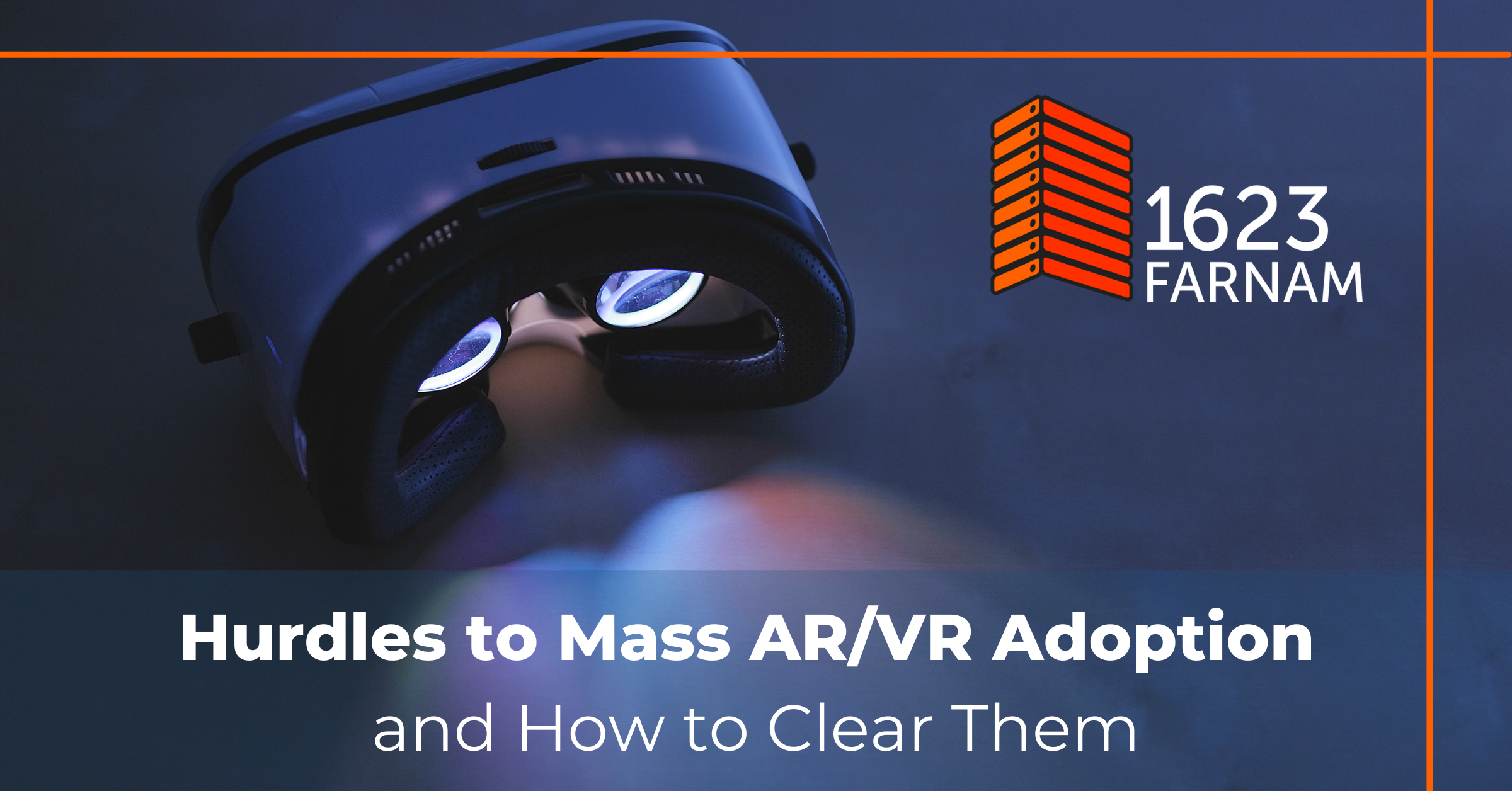Augmented and Virtual Realities (AR or VR) go hand-in-hand with disruptive potential. These reality-bending technologies present a level of innovation and versatility that can fundamentally change how industries operate or how value is delivered to users. Whether it’s advanced medicine for healthcare or immersive learning in education, the Extended Reality segment presents some of the most exciting applications of our time — so why haven’t we seen AR/VR take off yet?
In truth, before we can realize existing potential at the intersection of real and virtual worlds, there is a lot of infrastructural development that has to be accomplished first. Nevertheless, the first step to overcoming any obstacle is understanding it, so let’s take a look at what we’re up against.
The Extended Reality Challenge
One survey of AR and VR industry experts from 2020 reveals that some of the top Augmented Reality and Virtual Reality obstacles are lackluster user experience and a lack of quality content offerings, followed by consumer and business reluctance.
It might be tempting to look at this feedback and assume that the problem is low levels of experiential value, which is why many aren’t quick to adopt either for entertainment or for enterprise purposes. The solution to this problem would be to create more applications that users can leverage. This line of thinking does have some truth to it — in that the experience and where it can be leveraged is one point of failure — but it doesn’t dive deep enough into the root cause. Surveys like the one above actually show us a high-level view into what can essentially be boiled down to a systemic mismatch between user expectations and current models of network operation and data mobility.
When we explore today’s market sentiments in practice, obstacles often look like bulky, expensive headsets for virtual reality gaming that can make experiences seem cumbersome instead of seamless. These challenges can also come in the form of jitter or lag that can render the experience nearly unworkable, if not just impractical for high-stakes business situations. In truth, real-world applications can only flourish — and creativity within this medium can only truly thrive — when underlying networks are ready to support that reality. Bringing down barriers to AR/VR adoption today means facilitating a new network method.
Redrawing the Data Map for AR/VR
It can seem backwards to invest infrastructurally in something that isn’t yet being driven by high levels of demand, but AR and VR experiences present a case where demand will expand once we can build a system that supports great experiences. Fortunately, the landscape of communications is already headed in this infrastructural direction anyway thanks to 5G, IoT and more. All of these next-gen capabilities depend on the same kind of network topology — dense, high-capacity and close to the consumer for ultimate speed.
The demand for edge data centers and edge computing has grown massively in recent years, and it’s continuing on an upward trajectory (the global edge computing market is expected to grow from $3.6 billion in 2020 to $15.7 billion by 2025 at a CAGR of 34.1%). This is because it’s a model that enables connectivity-rich IT frameworks, in turn paving the way for the levels of latency and capacity that innovations like AR and VR require. As investment in this area continues to rise, the environment will become more suited to new applications that deliver on technological promises.
Furthermore, fostering creativity in this segment is another way we’re supporting AR and VR development. The industry knows that opportunities for extended reality are vast, but actually conceptualizing these use cases presents its own difficulties. Fortunately, developer challenges have been cropping up as a way to crowdsource imagination and practical problem solving in this field. Bringing tech experts and enthusiasts together, these challenges (like the one 1623 Farnam is participating in with the UNMC – iEXCEL, University of Nebraska, Greater Omaha Chamber, AIM Institute, T-Mobile and more) drive progress for the AR and VR ecosystem.
Skepticism is expected of a new technology that hasn’t yet put its best foot forward in the market — but AR/VR truly do have revolutionary potential. All that’s needed is the right foundation to build that potential on — and the good news is that momentum is building.
To learn more about AR/VR, check out our FAQ page.
To learn more about how 1623 Farnam empowers the new edge, click here.


